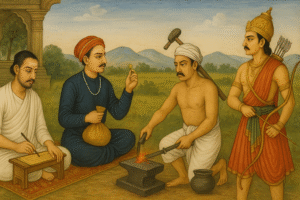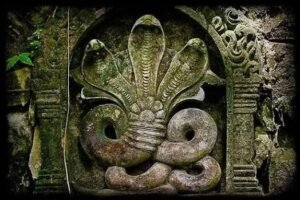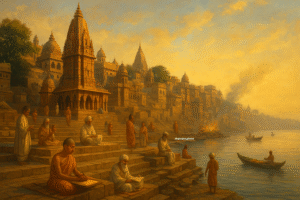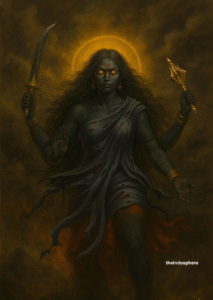The Natyashastra is one of the most ancient and profound texts on performing arts, originating in India and believed to be composed between 200 BCE and 200 CE. Written by sage Bharata Muni, this incredible work acts as a comprehensive guide to theatre, dance, and music, making it a cornerstone in the history of Indian classical arts.
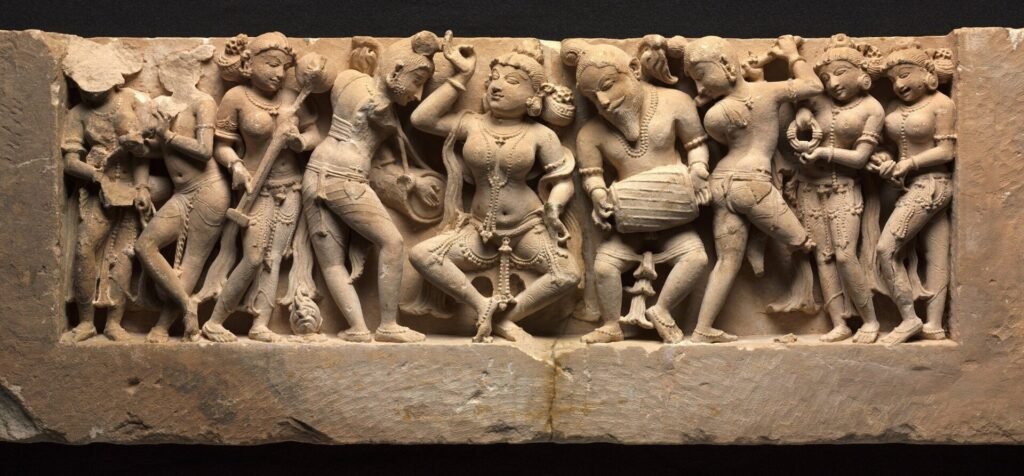
Northwestern India, Rajasthan, Sikar, Harshagiri, 10th century
For centuries, the Natyashastra has influenced everything from classical Indian dance forms to theater techniques, serving as a detailed manual for artists. In this blog, we dive into the origins, structure, and lasting impact of the Natyashastra and explore why it remains relevant in today’s world of performance and art.
What is Natyashastra?
Often referred to as the “science of performing arts,” the Natyashastra is a Sanskrit treatise that covers a vast range of topics related to theatre, dance, and music. The title “Nāṭya Shāstra” is derived from two Sanskrit words: “Nāṭya,” rooted in “Nata” (नट), meaning “act” or “represent,” and “Shāstra” (शास्त्र), meaning “rules,” “manual,” or “treatise.” In Indian literature, “Shāstra” typically refers to a compendium of knowledge in a specific field.
With approximately 6,000 verses spread across 36-37 chapters, it is one of the oldest surviving texts in the world that explains the nuances of performing arts. The text encompasses:
- Drama (Natya)
- Music (Gana)
- Dance (Nritya)
- Aesthetics and Rasa Theory
But it doesn’t stop there. The Natyashastra goes beyond just performance—it discusses the emotional experiences of the audience, the role of actors and dancers, and even stagecraft.
Origins of Natyashastra: A Divine Art Form
The Natyashastra begins with a mythological story about the origins of performing arts. According to legend, the gods requested a form of entertainment that was both educational and enjoyable for humans. As a result, Brahma, the creator god, composed Natya Veda, combining aspects of all four Vedas: the Rigveda (speech), Yajurveda (gesture), Samaveda (music), and Atharvaveda (emotion).
This divine art form was passed down to sage Bharata, who then recorded the guidelines in the Natyashastra, making it available for humanity.
The Heart of Natyashastra: Rasa Theory
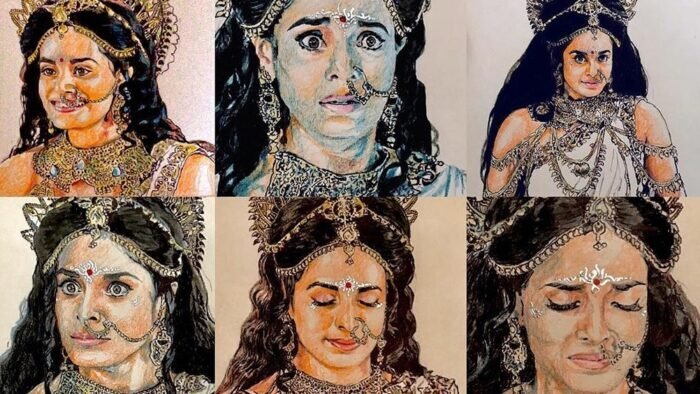
One of the most significant contributions of the Natyashastra is the Rasa Theory. The word rasa translates to “essence” or “flavor,” referring to the emotional experience an audience undergoes during a performance. Bharata Muni outlines eight key rasas, each evoking a specific emotional response:
- Shringar (Love)
- Hasya (Humor)
- Karuna (Compassion)
- Raudra (Anger)
- Veera (Heroism)
- Bhayanaka (Fear)
- Bibhatsa (Disgust)
- Adbhuta (Wonder)
Later scholars added a ninth rasa: Shanta (Peace). These rasas are integral to creating a captivating performance and are designed to evoke corresponding emotions, or bhavas, in the audience. The Rasa Theory remains a central element of Indian classical arts and is often referred to by artists and scholars alike.
The Four Forms of Acting (Abhinaya)
Bharata Muni goes into great detail about the different forms of acting, or Abhinaya, essential for any performance. According to the Natyashastra, there are four key types of Abhinaya:
- Angika Abhinaya: Physical gestures, facial expressions, and body movements.
- Vachika Abhinaya: The use of voice, dialogue, and speech to convey emotion.
- Aharya Abhinaya: Costumes, makeup, and overall appearance to enhance characterization.
- Sattvika Abhinaya: The subtle expression of inner feelings and emotions, often regarded as the highest form of acting.
Together, these forms of acting create a complete theatrical experience, where every aspect—from the actor’s movements to their facial expressions—works together to tell a story.

A Guide to Stagecraft and Performance Techniques
In addition to emotional theory and acting, the Natyashastra delves into practical aspects of stagecraft. It offers detailed guidelines on stage design, lighting, costumes, and makeup. There are instructions on how to construct an ideal stage and how to create the right ambiance to immerse the audience in the performance.

Furthermore, the text elaborates on dance and music, discussing everything from rhythmic patterns to the types of musical instruments used in performances. This aspect of the Natyashastra has deeply influenced Indian classical music and dance forms like Bharatanatyam, Kathakali, and Odissi, all of which follow principles laid down by Bharata Muni.

The Lasting Legacy of Natyashastra
Even though the Natyashastra was written centuries ago, its influence is undeniable and continues to resonate in modern times. Indian classical dances and musical traditions still draw heavily from this ancient text. Moreover, many contemporary filmmakers, theater directors, and choreographers explore the Natyashastra’s guidelines when crafting emotionally charged performances.

Natyashastra
Beyond India, scholars worldwide have studied the Natyashastra to understand its universal principles of performance, emotion, and storytelling. It is not merely a guide to performance but a timeless exploration of the psychology of art, making it a valuable resource across various artistic disciplines.
Why Natyashastra Still Matters Today
The Natyashastra is not just an ancient text but a living document that continues to inspire and inform the world of performing arts. Whether you’re a dancer, actor, musician, or even an enthusiast of Indian classical arts, the Natyashastra offers deep insights into how art influences emotions and storytelling. Its principles of rasa, abhinaya, and stagecraft have left an indelible mark on Indian culture and the global appreciation of artistic expression.
For those who seek to understand the emotional depth and technical mastery behind Indian classical performances, the Natyashastra remains a vital resource—a bridge between ancient wisdom and contemporary creativity.

By embracing the teachings of Bharata Muni, performers across generations have continued to mesmerize audiences, proving that the essence of great art, as captured in the Natyashastra, transcends time.
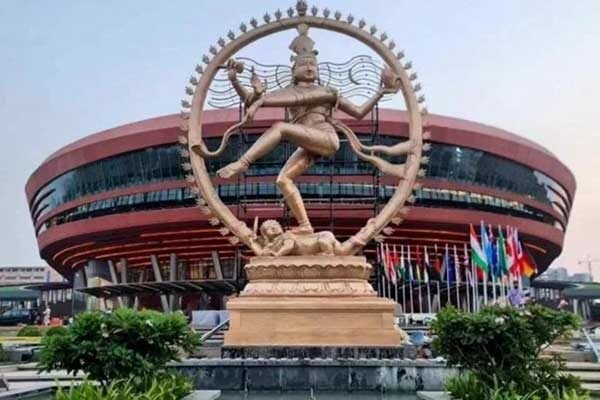
Created by the renowned sculptor Radhakrishnan Sthapaty of Swami Malai, Tamil Nadu.

